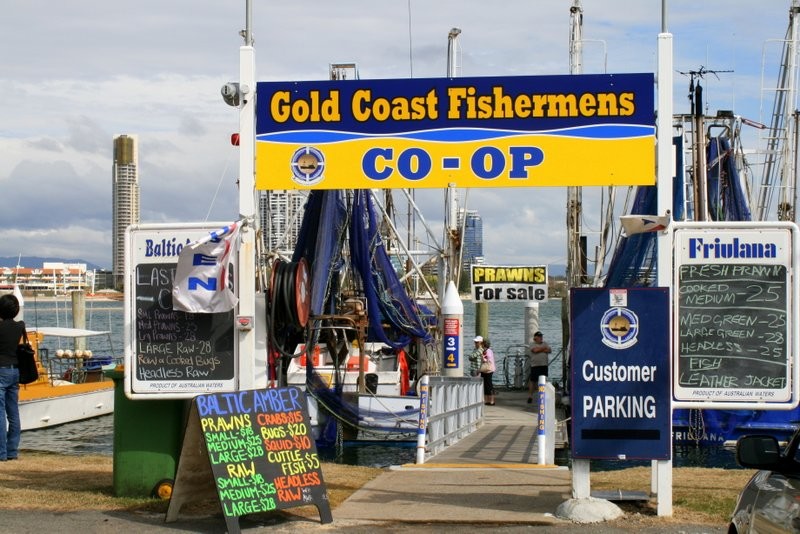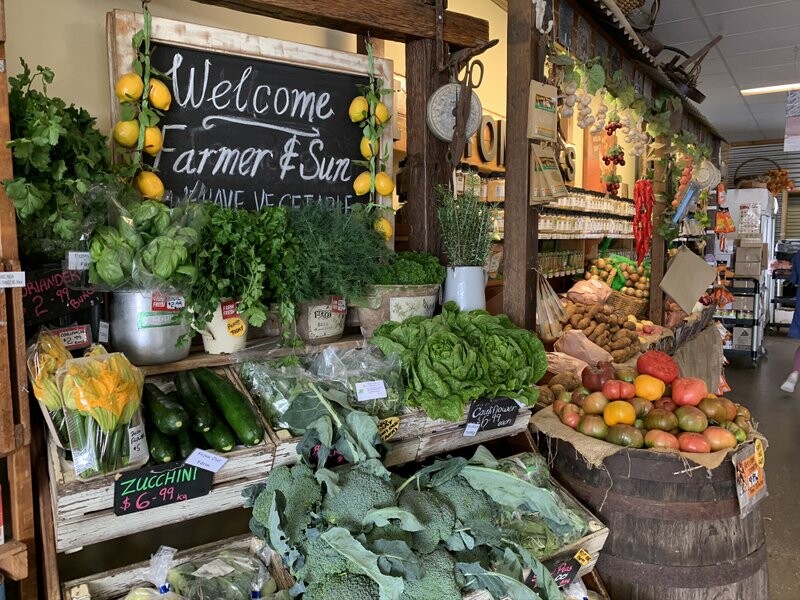Do you really know what you are eating? Discover the unsettling truth behind the most common food frauds and how to avoid them. From counterfeit ingredients to misleading labels, food fraud compromises the authenticity and safety of the food you eat every day.
Have you checked your kitchen for the most common food frauds lately? Is your fruit really organic? What’s really in your mixed herbs? Does your honey contain sugar syrup? Fake products, like counterfeit honey, may be hiding in plain sight.
My solution to this problem is to use my purchasing power to support local producers and retailers where I can build relationships that give me faith in their products and avoid the most common food frauds in Australia. More about that later.




Fuelled by rising prices and decreasing profit margins, those with little regard for food truth can make extra dollars by duping consumers.
What is food fraud?
The rise of food fraud, where counterfeit or deceptive food products are on the market, is a concerning trend in Australia. Fuelled by rising prices and decreasing profit margins, those with little regard for food truth can make extra dollars by duping consumers with everything from meat and seafood to dairy and even everyday herbs.
A report from AgriFutures Australia states that food fraud costs the Australian economy $3 billion every year. High-risk categories such as veal, wine, fish, and molluscs are under scrutiny, collectively carrying an estimated economic burden ranging from $700 million to $1.3 billion annually.
The globalization of the food and beverage supply chain, coupled with mounting geopolitical and environmental challenges, further exacerbates the vulnerability of raw ingredient availability, providing fraudsters with many opportunities to thrive in the shadows. Food microbiologist Associate Professor Julian Cox from UNSW School of Chemical Engineering says the practice not only tarnishes consumer trust but can pose a food safety risk, too, like when harmful chemicals were found in baby formula.
“Consumers are left in the dark when producers substitute ingredients that could potentially cause adverse health reactions,” he says.
“Whether it’s buying honey or olive oil at the supermarket or going to a high-end restaurant and ordering expensive wagyu steak, as consumers, we expect to get what we pay for. It’s hard, or even impossible, for the consumer to know what is real and what is fake.
“And typically, we don’t question the product we’re buying because we put trust in something as fundamental as the food supply chain.”

Six common food frauds
The most common food frauds in Australia take various forms, yet the ultimate objective remains consistent: to dupe consumers into paying a premium for a product that falls short of its claims. Within the food industry, the six prevalent food fraud practices include mislabelling, adulteration, substitution, counterfeiting, dilution, and concealment.
Mislabelling
Making claims about the product’s country of origin, making false claims about how the product was made, misrepresenting the product’s nutritional qualities, and misrepresenting the weight of the food.
“Currently, the vast majority of food recalls in Australia are due to issues with allergens. In these instances, while there is no intent, the problems boil down to mismanagement or mislabelling. Of course, when there’s a serious food safety risk, there’s less room for forgiveness, regardless of intent,” says A/Prof. Cox.
Adulteration
This occurs when fraudsters contaminate food by adding other substances to it, for example, adding sugar syrup to honey to lower cost.
Cases of food adulteration have been ruining the appetite of consumers for decades. In 2013, a scandal over the contamination of meat products rocked parts of Europe. Frozen beef burgers and lasagne were found to contain horse DNA in more than one-third of samples and pig DNA in 85 per cent of samples.
Unlike this case, others have been fatal – such as the 2008 Chinese milk scandal. Sanlu Group’s milk and infant formulas were adulterated with the toxic industrial chemical melamine, resulting in six infants’ deaths after they developed kidney stones. It’s estimated that over 300,000 babies in China got sick from the contaminated milk.
While the Sanlu Group was identified as the culprit, the incident damaged the reputation of China’s food exports and was a shattering blow to their domestic dairy industry.
“When scandals like these occur, it can put a spotlight not just on the implicated supplier but on the entire industry,” says A/Prof. Cox. “Repercussions such as global trade bans can occur if governments feel like the food exports from a certain country don’t meet a certain standard and the reputation of that industry is scrutinised.
“And a lot of the time, the primary producers aren’t aware that their product has been tampered with further along the food chain. Anytime there’s a way that you can pass off a product as something else, and make money doing it, there’ll be someone who’s tempted to defraud the consumer.”
Substitution
Earlier this year, it was reported that Booths, a UK supermarket chain, discovered one of its suppliers had falsely labelled imported beef as British. The prepacked slices of beef and deli products were from another country in Europe and South America, and the case is now being investigated by the UK’s National Food Crime Unit.
“You can pick almost any commodity, any food or beverage, and you can almost guarantee that products within that category have been tampered with somewhere along the supply chain – even if it’s in the labelling and claiming to be from a specific region of the world,” says A/Prof. Cox.
Counterfeiting
Counterfeit food fraud involves the deceptive practice of presenting subpar or synthetic food items as reputable or premium brands. This nefarious activity extends across a wide array of food categories, including fish, spices, honey, olive oil and chocolate. Not only does it pose risks to consumers’ well-being and finances, but it also imposes a hefty financial toll of $3 billion annually on Australians. Some companies employ forensic techniques to track the origin and validate the authenticity of food products.
Dilution
Food fraud dilution occurs when the volume or weight of food is misrepresented by adding an inert, undeclared ingredient. For example, adding beet fibres or dried marigolds to saffron or watering down milk.
Concealment
Concealing flaws or unwanted attributes through the addition of undisclosed ingredients, like using food colouring to mask imperfections on fruits or to create a false appearance of freshness. Furthermore, instances where products are falsely advertised as ‘organic’ or ‘halal’ to command higher prices, despite not meeting the claimed standards.

What can you do about it?
What can you do about the most common food frauds in Australia? While the responsibility of confirming a product’s authenticity shouldn’t rest solely on the customer, it’s crucial to inquire if you harbour any suspicions.
A/Prof. Cox believes this is easier said than done. “Unless you’re a true expert in that area, you’re probably not going to tell if the local fish and chip shop has sold you barramundi or if they’ve just sold you battered shark meat,” says A/Prof. Cox.
There is no easy solution to this global problem, but measures such as authenticity testing emphasise early detection and prevention rather than reacting to issues once they occur.
Government intervention can also protect the industry from food fraud. Policies around minimum prices for materials can ensure producers, wholesalers, and retailers are getting a fair cut.
“It’s always in the best interest of the farmers and food distributors themselves to make sure the consumers are getting what they’re paying for,” he says. “Thankfully, now we have DNA technology, which makes it easy to take a quick extract of tissue of meat to determine if it’s really what it’s labelled as.
“In some cases, we have low-tech options. For example, the freezing point is a very old test that industry can use. For example, the freezing point of milk can indicate if water has been added. These measures can help protect industry integrity and ensure that food quality and safety are not compromised.”
How to avoid food fraud
Just like you, I want to ensure the food I eat is pure and correctly labelled. It can be expensive to eat well, and paying a premium price for false promises is more than annoying.
What do I do? Here’s a list of ways to avoid the most common food frauds in Australia.
- Buy local from people that you know. Establish a relationship with your butcher, baker, fishmonger and greengrocer and ask their advice when purchasing. Visit food festivals and meet local producers. Here’s a list of the top Australian food festivals.
- Subscribe to food boxes from people in your region. The Scenic Rim Farm Box is a perfect example of high-quality authentic food direct from the farmer to you.
- Visit farmers’ markets and buy from stallholders who sell their own produce. Here’s a list of markets in South East Queensland.
- Join your local REKO group and purchase directly from farmers and makers.
- Grow your own. I often end up feeding the local possums, but the satisfaction of picking my own lettuce and herbs is high. If only I could get to the tomatoes and strawberries before the possums. Here’s how to grow bush tucker in your own backyard.
So, before your next meal, take a moment to consider: Do you really know what you are eating? Unveil the unsettling truth behind the most common food frauds in Australia and learn how to safeguard your plate from counterfeit ingredients and misleading labels before you take that next bite!
Related Articles
Related
Top 10 2022 Australian Food Trends
The top 10 2022 Australian food trends have been shaped by two years of uncertainty and a fierce hunger to come back from the brink.
Straya’s Snack Attack Top 10: Top 10 Iconic Australian Foods
Treat your taste buds with these 10 iconic Australian foods that have stood the test of time or evoke strong memories from childhood.
Unlocking the Flavours of Your Backyard: A Guide to Growing Your Own Bush Tucker
Discover the secrets of cultivating backyard bush tucker! Learn how to grow your own bush tucker with expert tips and insights. Explore unique flavors right in your backyard.

Follow Ed+bK
Join
Subscribe For Updates & Offers
Don’t miss another update. Get your food and travel news from someone who has been writing about it for more than five minutes straight in
